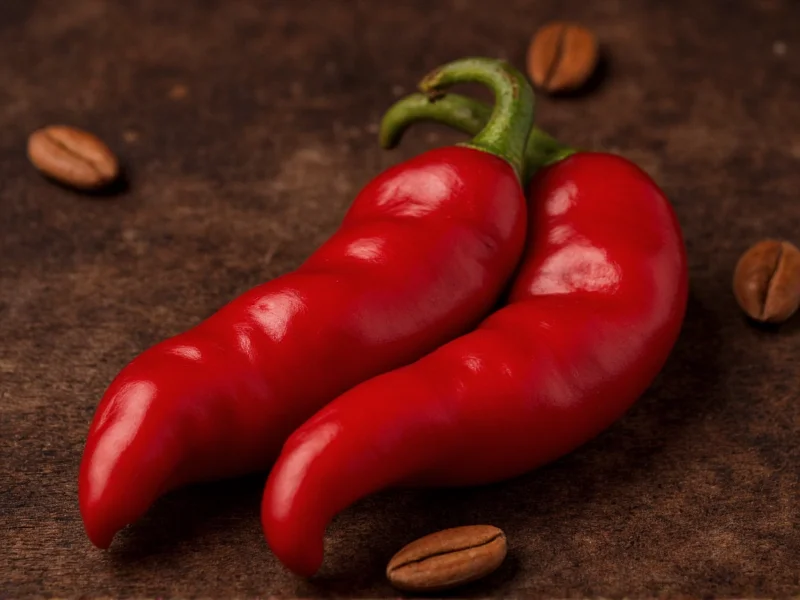Understanding the precise heat measurement of the red ghost pepper requires context about both the pepper itself and the Scoville scale. The red ghost pepper represents a mature stage of the Bhut Jolokia cultivar, which originated in the northeastern regions of India. As the pepper ripens from green to vibrant red, its capsaicin concentration—the compound responsible for heat—reaches its maximum potential.
Decoding the Scoville Scale Measurement
The Scoville scale, developed by pharmacist Wilbur Scoville in 1912, measures the pungency or 'heat' of chili peppers. Originally determined through human taste testing, modern measurements use high-performance liquid chromatography (HPLC) for precise capsaicinoid quantification, then convert these measurements to Scoville Heat Units.
When examining the red ghost pepper scoville rating, it's important to understand that heat levels can vary based on growing conditions, soil composition, climate, and even the specific plant. The official range of 900,000-1,041,427 SHU represents measurements taken from multiple specimens under controlled conditions.
Heat Comparison: Where Red Ghost Pepper Stands
To contextualize the ghost pepper scoville heat units, consider these comparisons with more familiar peppers:
| Pepper Variety | Scoville Heat Units (SHU) | Heat Relative to Red Ghost |
|---|---|---|
| Red Ghost Pepper | 900,000-1,041,427 | 1x (baseline) |
| Habanero | 100,000-350,000 | 2.5-9x milder |
| Serrano | 10,000-23,000 | 40-90x milder |
| Jalapeño | 2,500-8,000 | 115-360x milder |
| Bell Pepper | 0 | Infinitely milder |
This comparison clearly demonstrates why the question "how hot is red ghost pepper" deserves serious consideration before handling or consuming these peppers. The red ghost pepper delivers approximately 2-3 times more heat than the already formidable habanero.
Why the Red Variety Matters
Many people wonder about red ghost pepper vs regular ghost pepper differences. The primary distinction lies in maturity rather than variety. Ghost peppers transition from green to orange to red as they ripen on the plant. The red ghost pepper represents the fully mature stage, often developing slightly more complex flavor notes while maintaining the same extreme heat level.
Contrary to popular belief, the color change doesn't significantly increase the heat. Both orange and red ghost peppers fall within the same Scoville range. The misconception that red ghost peppers are hotter likely stems from the fact that fully ripened peppers sometimes develop marginally higher capsaicin concentrations.
Practical Implications of Extreme Heat
Understanding the red ghost pepper scoville rating has real-world consequences for culinary applications. Chefs and home cooks should exercise extreme caution when handling these peppers:
- Always wear food-safe gloves when cutting or processing
- Avoid touching your face, especially eyes, during handling
- Use minimal amounts—a single seed can overwhelm a dish
- Start with tiny quantities and gradually increase to desired heat level
The extreme heat means that is red ghost pepper hotter than habanero is almost a rhetorical question—the ghost pepper family delivers substantially more fire. When substituting in recipes, use approximately 1/3 to 1/2 the amount of ghost pepper compared to habanero.
Scientific Measurement Considerations
The precise Scoville measurement for any pepper involves several variables. The 900,000-1,041,427 SHU range for red ghost pepper comes from multiple studies, including the landmark 2007 measurement by New Mexico State University's Chile Pepper Institute that first documented the Bhut Jolokia's extreme heat.
Modern HPLC testing reveals that capsaicinoid concentration typically ranges from 1.2% to 1.8% in ghost peppers, with the red variety showing similar concentrations to orange specimens. This scientific approach has largely replaced the subjective original Scoville Organoleptic Test, providing more reliable and consistent measurements for the ghost pepper scoville heat units.
Safety and Handling Recommendations
Given the extreme heat level, proper handling of red ghost peppers is essential. The capsaicin concentration can cause severe skin irritation and respiratory issues. Professional chefs recommend:
- Working in well-ventilated areas or outdoors
- Using nitrile gloves (latex offers insufficient protection)
- Having dairy products like milk or yogurt nearby to counteract accidental exposure
- Never using blenders or food processors without proper ventilation—capsaicin aerosolizes easily
For those wondering about red ghost pepper uses, these peppers work best in small quantities for hot sauces, specialty curries, and extreme heat challenges. Many commercial producers use them to create infused oils or dried powders that allow for more controlled heat application.











 浙公网安备
33010002000092号
浙公网安备
33010002000092号 浙B2-20120091-4
浙B2-20120091-4